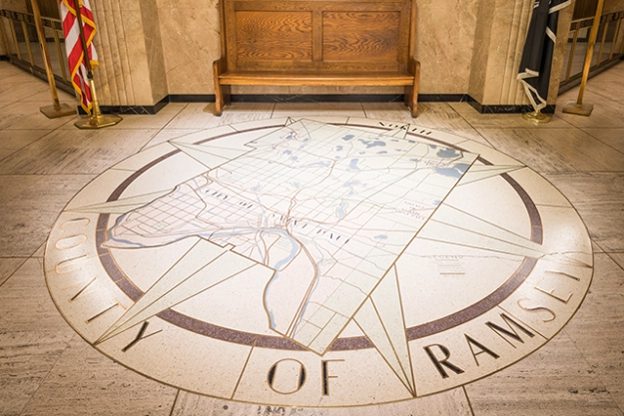

All the copper mining happy dancing is premature
Last week, Ramsey County judge John Guthmann issued an order with findings into “permitting irregularities” at the Minnesota Pollution Control Agency. The judge said, Sure, the agency destroyed some evidence, and hid some, and engaged in some naked PR making for PolyMet’s requested water discharge permit for its proposed copper sulfide mine, but hey, that’s no reason to go nuclear on it (my paraphrase). MinnPost’s Walker Orenstein wrote a good explanation of the order that you can read here.
The Timberjay also published a story that you can read here.
I wrote a piece about it, predicting a year ago that the whole business would come a cropper. I think it did, for reasons you can read about at that link.
First of all, why did the MPCA think that a lengthy list of comments and objections that go to the heart of the Clean Water Act by a senior Region 5 EPA staffer would generate bad press and then seek to hide them? The answer is obvious beyond argument.
The EPA staffer said, among other things, that the lack of what are known as WQBELs in the permit rendered the permit useless, and not coincidentally, in violation of the Clean Water Act. WQBELs are:
Water Quality-Based Effluent Limit (WQBEL)—A value determined by selecting the most stringent of the effluent limits calculated using all applicable water quality criteria (e.g., aquatic life, human health, and wildlife) for a specific point source to a specific receiving water for a given pollutant.
The whole freakin’ purpose of NPDES permits is to regulate and limit pollution from point sources.
The MPCA was right in thinking it would be a problem — for PolyMet and the MPCA, anyway — if this information came to light.
Well, the information did come to light, and it was a problem, but the judge seems to think that because it was leaked and became known — the MPCA and the EPA never did disclose it — we should let bygones be bygones. Never mind that the permit is still a violation of the Clean Water Act and the MPCA tried to hide it.
The Court of Appeals sent the water permit to the district court to get to the bottom of what was going on: to make a record. The hearing before the judge took place in January of this year. About a month earlier, in December of 2019, the Court of Appeals — the same court that directed the Ramsey County District Court to make a record in the PolyMet permit case — issued a decision in another MPCA mining permit case, one also involving WQBELs, or rather the lack of them. I wrote about that, too.
You’ll never guess how the Court of Appeals ruled. C’mon, guess. If you guessed that the Court of Appeals struck down a MinnTac permit because it lacked WQBELs (among other reasons), go and get yourself cookie.
I would like you to read the story at the link, but to summarize: MinnTac (really U.S. Steel) was operating what I believe is the largest taconite mine in the state, probably the country, on an expired MPCA water discharge permit, expired since 1992, the year after the Twins last won the World Series. A loooong, loooong time ago. There was a series of interim agreements between MinnTac and the MPCA, but it wasn’t formal permitting where the public has a right to comment, or even really see what is going on.
The agency finally got around to issuing a new permit and our supine friends at the MPCA came through for MinnTac and issued the permit without WQBELs. (The old one didn’t have them either, imposing mostly testing and reporting requirements.) The MPCA wanted to rely on something it called “operating limits,” a much squishier idea, limits more in the mind of the MPCA, and not so enforceable by the those pesky Indians and the environmental nonprofits because of something called the “permit shield.” (You can defend environmental lawsuits by saying you are in compliance with your permit, regardless of how spineless and corrupt the permit is.)
But the Court of Appeals saw through it. If there is a risk of the discharge of pollutants — such as sulfates or heavy metals — a water discharge permit under the Clean Water Act must include WQBELs, said the Court of Appeals.
In other words, the Court of Appeals agrees with the EPA staffer on the Clean Water Act requirement to include WQBELs in water discharge permits.
The truly amazing things to me are that the Court of Appeals directed the District Court to look into “permitting irregularities;” the District Court demonstrated a lack of curiosity in its discovery order in advance of the hearing, and the MinnTac decision was issued virtually on the eve of Judge Guthmann calling things to order in the PolyMet case; it seemed to have informed the judge’s thinking not at all.
If the Court of Appeals has any fidelity to its own reasoning in the recent MinnTac case, and to the Clean Water Act, the MPCA won’t get a pass here.
– o O o –
I started this story a few days ago. Last evening, the Star Tribune published Janet Keough and Paula Maccabee’s op-ed: PolyMet permit: Secrecy, manipulation and a low bar for Minnesota agencies. It’s in the paper edition today, Friday, September 11th. Paula Maccabee is the — scrappy — attorney for Water Legacy in this water discharge permit case, now again before the Minnesota Court of Appeals.
You should read the piece. I’ve tried to follow copper sulfide mining issues for about eight years ago now; mining regulators in Minnesota are entirely industry captured. Janet and Paula lay that out well as it pertains to this case.
Thanks for your feedback. If we like what you have to say, it may appear in a future post of reader reactions.

